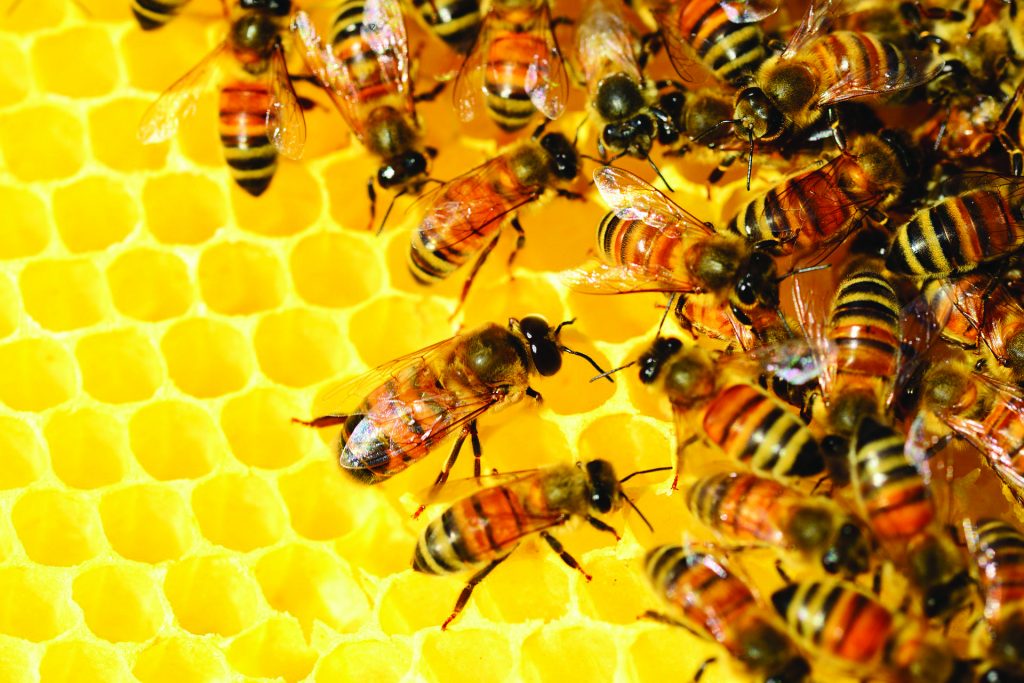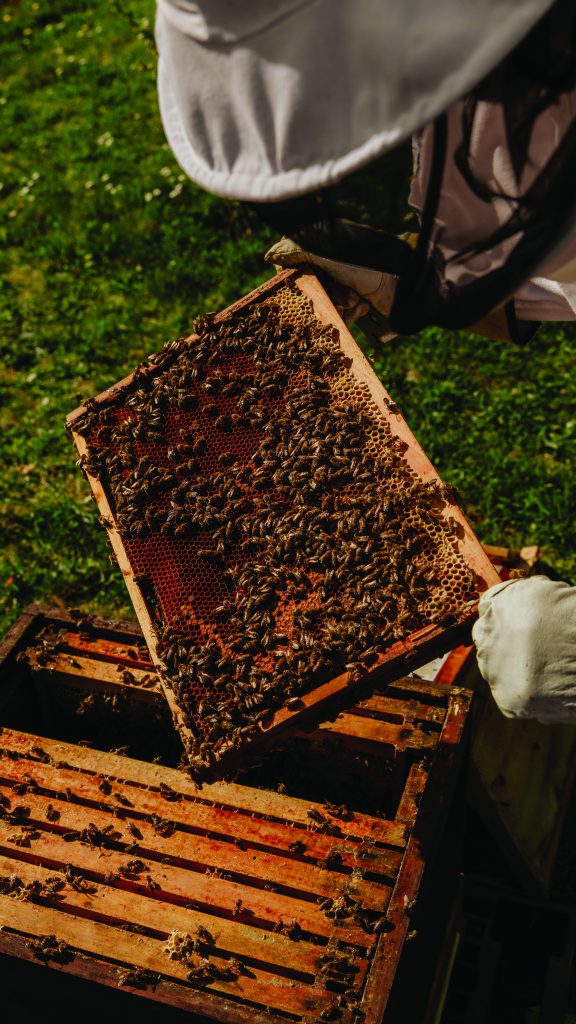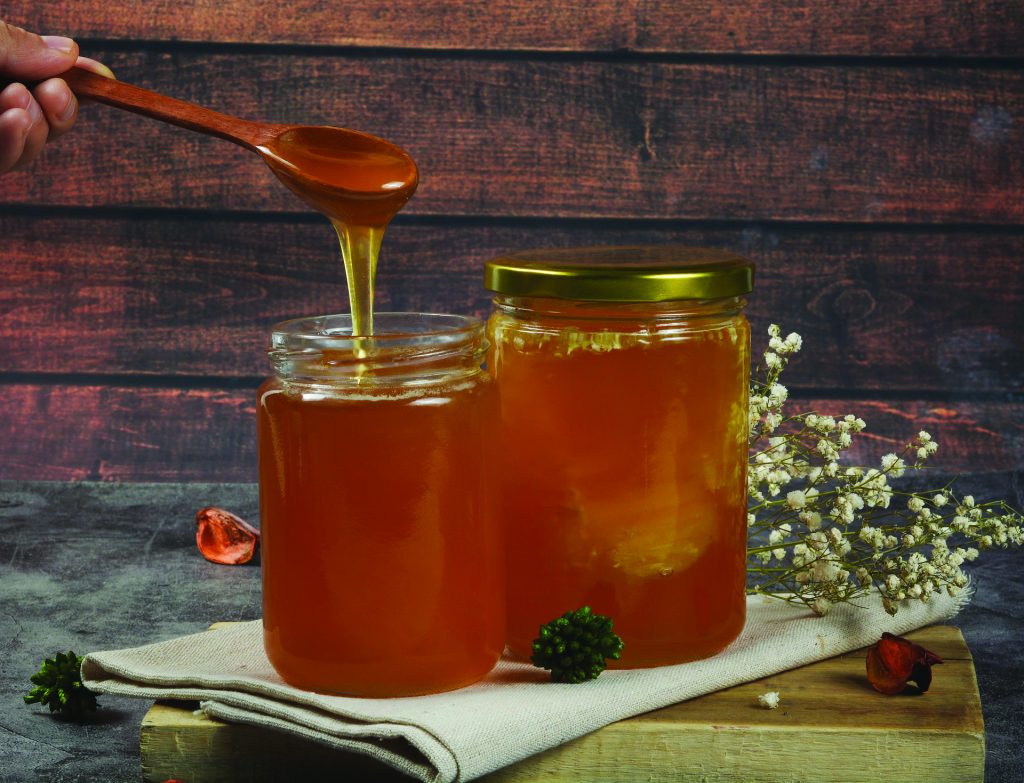5.7 Honey: the nectar from heaven
“Life is the flower for which love is the honey,” said Victor Hugo. We all talk more prosaically about a person who is “as sweet as honey” and when we get married, we go on a “honeymoon”. A single word to express the greatest sweetness and purity coming from the hard and stubborn work of thousands of industrious little bees. And when it comes to honey, Tuscany and the province of Siena are excellent producers, renowned in Italy and throughout the world, for jars that contain not only the delicious yellow-orange nectar, but also the fragrance and essence of a unique and uncontaminated territory.
The honey of Tuscany is distinguished by its specificity derived from the territory, due to the combination of natural and human factors together with the favourable environmental conditions that, over time, have allowed a development of beekeeping since Etruscan and Roman times, on the tables of those who used to serve honey with wine, condiments and dishes. Besides honey, wax was also produced, a raw material of enormous economic importance for its many uses. Several centuries before, Pharaoh Ramses II paid his dignitaries with jars of pure honey; the official drink in Olympus was hydromel, a sort of beer obtained by fermenting the combs in water; the poet Virgil was a beekeeper and preferred thyme honey.

In the Middle Ages honey was often used in monasteries to cure any illnesses from fever to depression and burns. Muhammad also encouraged his followers to make abundant use of it. The patron saint of beekeepers and bees is Saint Ambrose, bishop of Milan. The legend tells that a young boy while he was sleeping deeply was suddenly surrounded by a swarm of bees. The child did not notice anything, continuing to sleep peacefully and with his mouth wide open.
The bees then began to come in and out of his mouth without disturbing his peaceful sleep. The young man’s father witnessed the scene at first in fear, but then perceived that the event had something prodigious in it and prohibited the maid from chasing away the bees. It was the insects, spontaneously, that moved away up into the sky, so high that they could no longer be seen. And it was the father, the prefect of Gaul, who anticipated and wished his son a great future. That child was Ambrose and during his life he became governor, bishop, writer and protector of the poor. And, of course, also bees.
But what is honey? The first beekeeping records can be found in Egypt and the ancient Egyptians were the first people to develop beekeeping around 3,500 BC. In fact, Pharaoh believed that bees were a divine sign and was always portrayed as the queen bee. And the Egyptians, who had made a real cult of death, used to place small earthenware jars full of honey in the tombs of the Pharaohs, to gently accompany their last journey and provide them with the necessary nourishment. Some of those tombs which have recently been reopened by archaeologists have revealed jars still perfectly intact and full of that delicious nectar.

An ancient legend written about an Egyptian papyrus kept in the British Museum in London, tells that when the Sun god, Ra, was crying for love, his tears falling to the ground turned into honey: “And the bees built their house by filling it with flowers of all kinds of plants; therefore was born wax and also honey, all originated from Ra’s tears”.
Honey is an amazing product, the only sweet food that is not altered by man and is the only food produced entirely by insects; it is an easily assimilable food, not having undergone transformation processes, and at the same time strongly energetic, thanks to these peculiarities it has always been considered an excellent remedy for various diseases.
The honey production process is very simple: it all starts with the bee, which, committed to obtaining food supplies for the survival of the beehive, wanders through the fields and rests on the many flowers it encounters on its way. By sucking the nectar of the flowers and the secretions of plants (as happens with honeydew honey), it transforms it into honey by mixing it with the enzymes it produces, and leaves it to mature in the honeycombs of the beehive. In this process, which looks almost magical, the beekeeper’s role is very limited: he has to take care of transporting the bees to the hives near the flowers, collect the honey they produce, leaving some for their survival, potting it and making it available to the final consumer.
In the province of Siena, honey is produced basically everywhere, from the surroundings of Siena to the small farms of Sovicille, Buonconvento and Murlo and, thanks to a particular micro climate, excellent qualities of the product can be found in Valdorcia and Valdichiana. There are also many small scale amateur producers, who produce honey exclusively for a hobby born out of love and respect for bees and the surrounding nature. Ten varieties are produced in the province of Siena: mixed flower honey, sunflower, ivy, clover, chestnut, arbutus, acacia, honeydew, ivy and heather. All types of honey have health benefits such as acacia, which is an anti inflammatory for the throat and a detoxifier for the liver, while arbutus has diuretic and purifying properties. Honey, therefore, is a must on the tables of the Sienese, in the breakfasts of hotels and holiday farms and is also used as a substitute for sugar in many traditional sweets: from Cavallucci to Ricciarelli di Siena, from Mandorlata di Montalcino to Panforte.
 Honey is the most well-known product of the bees, but we must not forget all the other products that can be produced from the meticulous work of the bees, available on the market and in the food and wine markets that brighten up the streets and squares of the villages in the province of Siena all year round. We are talking about the tincture of propolis, flower pollen, royal jelly and wax. The propolis, which can be alcoholic or non-alcoholic, consists of resins and balsamic substances collected by bees on vegetable buds and cortices subsequently mixed with wax. It is especially valuable for its high antibiotic properties and for this reason it is often used to fight respiratory infections.
Honey is the most well-known product of the bees, but we must not forget all the other products that can be produced from the meticulous work of the bees, available on the market and in the food and wine markets that brighten up the streets and squares of the villages in the province of Siena all year round. We are talking about the tincture of propolis, flower pollen, royal jelly and wax. The propolis, which can be alcoholic or non-alcoholic, consists of resins and balsamic substances collected by bees on vegetable buds and cortices subsequently mixed with wax. It is especially valuable for its high antibiotic properties and for this reason it is often used to fight respiratory infections.
Flower pollen is also known as an excellent regulator of intestinal functions but it also acts on the nervous system, fighting nervousness, sleep and memory disorders, and is also indicated against asthenia and food deficiencies. Royal jelly is regarded as a “special” honey, with a very high energy and regenerating power. It is the ‘super food’ of which only the queen bee is fed, produced by the glands of some worker bees that lay it in the cells of the beehive where the egg that generates the queen bee is laid. And it is no coincidence that, thanks to this invaluable food, the queen bee lives on average ten times more than a worker bee. Royal jelly is a natural restorative particularly suitable for children, adolescents and the elderly. Finally, the wax, obtained from the small lids (called “opercula”) of the combs, is very pure and for this reason it is used for polishing wood but also for the production of fragrant candles.
The link between honey and Tuscany, and the Lands of Siena, has always been very strong, so much that already at the beginning of the 20th century the Accademia dei Georgofili mobilised to demonstrate that not only do bees not damage the fruit but they are particularly useful for agriculture. And it is precisely from Tuscany that, thanks to a millenarian tradition of coexistence with bees, several initiatives come to defend and promote beekeeping, including the “Week of Honey” in Montalcino held every second weekend in September. A unique opportunity to attend the international honey competition, participate in workshops and walk around the stands where you can buy and taste delicious honeys.
Brochure edited by Primamedia, Siena
Texts edited by Susanna Danisi
Editorial coordination: Elisa Boniello and Laura Modafferi
Photos: Archivio Comune di Siena Graphic design: Michela Bracciali
